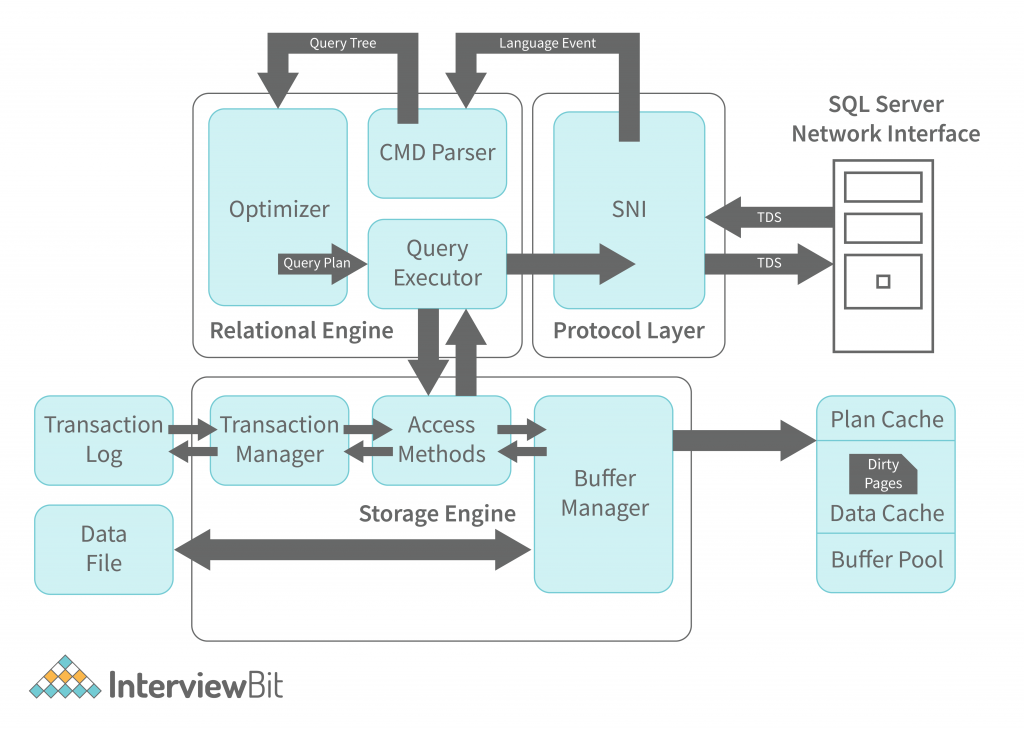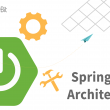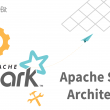MS SQL Server is a client-server system. When the MS SQL Server process starts, the client application supplies a request. The SQL Server processes the request, responds with processed data, and transmits it back to the client application. There are thousands of records out there, and they are increasing daily. That is why we need an SQL Server database to store them. For starters, however, databases must be managed, and that is where things like the Microsoft SQL Server come into play. The key aspects of SQL Server architecture are addressed in this article. It discusses how MS SQL Server differs from other SQL servers, how Windows SQL Server relates to the topic, and other SQL server issues. Now that we have some definitions, let’s begin with the fundamentals.
History of SQL Server
There have been several versions of SQL Server over three decades.
- 1989 was the year when Microsoft and Sybase released version 1.0.
- Microsoft and Sybase mutually ended their partnership in 1993, but Microsoft retained SQL Server’s rights.
- In 1998, Microsoft released SQL Server 7.0, a radical overhaul of the SQL Server database management system.
- In 2000, Microsoft released SQL Server 2000.
- 2005 was the year when Microsoft released SQL Server 2005.
- 2008 was the year when Microsoft released SQL Server 2008.
- 2010 saw the release of Microsoft SQL Server 2008 R2, which added new services and a master data management system.
- 2012 was the year when Microsoft released SQL Server 2012.
- 2014 was the year when Microsoft released SQL Server 2014.
- 2016 was the year when Microsoft released SQL Server 2016.
- In September 2017, Microsoft released SQL Server 2017, including Linux support.
- With Microsoft releasing SQL Server 2019, Big Data clusters are now available.
There are several editions of SQL Server:
Confused about your next job?
- A high-end, large-scale, mission-critical business operation is what SQL Server Enterprise is designed for. It provides advanced analytics, high-end security, and Machine Learning, among other things.
- SQL Server Standard is the best option for mid-range applications and data centers, including basic reporting and analytics.
- A Web host can choose to have SQL Server WEB as their low-cost ownership option or scale, manage, and maintain small to large-scale Web properties with this product.
- An SQL Server Developer is similar to the Enterprise edition but is specifically engineered for non-production environments and is primarily used for builds, tests, and demos.
- SQL Server Express is an open-source, low-cost solution intended for small-scale operations.
What is SQL Server?
Microsoft created SQL Server to compete with the Oracle and MySQL databases. It uses ANSI SQL, the most popular SQL language. However, SQL Server comes with its own version of the SQL language, which is Microsoft’s proprietary. Many data sets are stored on SQL Server machines, making them high performance. SQL Servers manage massive data sets across every computer connected to a network. The fundamental distinction between SQL Server and Windows SQL Server is that it serves a different purpose. Raw data can be stored on Windows Servers, such as spreadsheets, projects, images, and Word documents.
A relational database management system contains a number of tools and solutions that help you manage, watch over, oversee, and interact with relational databases. Relational databases are stored in table form using most relational database management systems. SQL is used to work with the database.
SQL Server Architecture
A client-server architecture is employed in MS SQL Server. The request is passed to the SQL Server before processed data is returned. We will discuss the whole structure in detail below:
The diagram reveals that there are three key elements in SQL Server Architecture:

It’s time now to focus on the three primary SQL Server components. Please be prepared for an intensive discussion.
Protocol Layer: The Client-Server architecture is supported by this layer, as well as streams.
- Shared memory is a protocol that allows clients and servers to communicate using the same memory.
- Even though the client and the SQL server are installed on separate machines, and even though they are remote to each other, they can still communicate via TCP/IP.
- Local Area Network (LAN) connections allow the Named Pipes protocol to communicate with the SQL server over the network.
- TDS is the protocol used by all three programs to transfer data from the client to the server.
Relational Engine: The relational engine controls the processing of data by the storage engine and provides the SQL Server components that determine exactly how a query should be performed. The relational engine consists of three main sections: the relational engine, the SQL Server components that govern how the query is executed, and the components that control how it is executed. The relational engine requests data from the storage engine and processes the returned results. The relational engine and the components that control how it is executed have three main sections: the relational engine, the components that control how it is executed, and the components that control how it is processed.
- The CMD Parser is primarily concerned with identifying and removing semantic and syntactic glitches, and generating a query tree. The Parser is the first relational engine component to receive query data.
- The Optimizer works to ensure that a requested Query Response is as efficient as possible by eliminating redundant tasks and finding the optimal plan. It does not, however, guarantee that a certain plan is the optimal one.
- The query executor produces the data fetching logic’s behaviour when the Storage Engine delivers the data to the Protocol layer. When the Storage Engine supplies data to the Executor, the behaviour is published to the Protocol layer. After the behaviour is published, the final data is given to the user.
Storage Engine: When data is stored by Storage Engine, it is retrieved from a storage system such as SAN or disk.
- There are three types of files in the Storage Engine: the Primary, the Secondary, and the Log files.
- The Access Method component exchanges information with the buffer manager and transaction logs.
- The Buffer Manager controls the core functions for the following three modules:
- The plan cache holds the existing execution plans. The buffer manager searches for the plan.
- The buffer manager then provides access to the data required by the data processing operation.
- The Transaction Manager’s processing logic data is kept on Dirty Pages.
- The plan cache holds the existing execution plans. The buffer manager searches for the plan.
- A Transaction Manager is activated when there are non-select transactions and these are managed using Log and Lock Managers.
Components of SQL Server Architecture
The MS SQL Server services and components include:
- Data storage, data security, and rapid transaction processing are responsibilities of the Database Engine.
- SQL Server instances can be stopped, paused, and continued by this service. It is called sqlservr.exe.
- The sqlagent.exe file performs the task of an SQL Server Agent. It schedules either on-demand or event-based tasks.
- The SQL Server Browser connects incoming requests to the requested SQL server instance. Its executable name is sqlbrowser.exe.
- The fdlauncher.exe executable can be used to run a full-text search in SQL Server. It is capable of searching character data in SQL Tables.
- When the SQL server is not operating, this component allows data file backups and restores. The sqlwriter.exe file is its executable name.
- The R and Python programming languages are used to build advanced analytics apps for SQL Server. msmdsrv.exe is the name of the program that is associated with SQL Server.
- Reporting Services (SSRS) requires no installation but provides reporting and decision-making capabilities. The Reporting Services Service executable is ReportingServicesService.exe.
- SSIS’s extract, transform, and load capabilities are finally available through this service. It converts raw data into useful data by converting it into another data type. Its name is MsDtsSrvr.exe.
Advantages of SQL Server Architecture
SQL Server instances offer the following advantages:
- SQL Server is simple to install and requires a minimum of command-line configuration compared to other database servers that require extensive remote procedure calls. It is also easy to use. The setup wizard enables one-click installation of Microsoft SQL. The installation guide is clear and includes a lot of instructions, making this a convenient experience. The software updates are downloaded by the setup wizard, which reduces manual labour. As a result, the database remains current and maintenance costs are reduced. Analytical and database capabilities can be added at a later date.
- When you purchase an SQL Server license, instances help reduce the costs of operating the server. Users receive different services from different instances, so there is no need to purchase one license for all services.
- SQL Server provides enhanced performance thanks to built-in transparent data compression and encryption capabilities. SQL server permits users to effectively manage the security of sensitive business data by offering efficient permission controls. Because the data must not be modified in order to secure and encrypt it, the SQL server provides efficient permission controls.
- A corporate enterprise or domestic and remote users can select the edition that meets their requirements. There are several editions that cater to the needs of corporate enterprises and remote and domestic users and they differ in terms of features and price levels. Therefore, organisations can determine whether or not they want to use a particular version. The editions include:
- Enterprise – Large enterprises that need large data storage necessarily have this edition. It provides data warehouses and web-enabled databases. Enterprise-grade SQL server has all the essential features an organisation requires.
- Standard – A small- or medium-scale business should stick with the standard SQL Server edition. It is perfect for handling small- or medium-scale operations. Additionally, branch offices and small web servers can be utilised as back-end databases. There are no restrictions on users.
- Express – Free Express SQL server edition has low user capacity, lacks significant features compared to standard and enterprise SQL server editions, and is restricted in terms of capabilities.
- Developer –The developer SQL server edition is exactly like an enterprise SQL edition in terms of function and appearance. However, the license is used for testing and development purposes. Because it is generally employed by developers to test their creations on top of the SQL server, the SQL server edition is commonly referred to as the Developer SQL server edition.
- Enterprise – Large enterprises that need large data storage necessarily have this edition. It provides data warehouses and web-enabled databases. Enterprise-grade SQL server has all the essential features an organisation requires.
- The SQL Server database is extremely secure, using advanced encryption algorithms that virtually make it impossible to break the security barriers. SQL Server, a commercial relational database with additional security features, reduces the risk of attacks.
- An SQL Server service outage can result in a service slowdown if a failed instance is left in production. However, if a standby server is in use, you will be kept up to date with any failed server. SQL Server instances can be used to achieve this service level.
- With the help of advanced recovery tools, it’s possible to recover the entire database. SQL Server is a combination of several sophisticated features that assist in recovering lost or damaged data. Data storage and related processes are tightly controlled by the Database Engine, which includes both a core component and a slew of facilities. SQL Server is widely employed by large firms. These services are available to them.
- SQL server’s data-management tools, such as the effective data mining, disk partitioning, and data management, help ensure that critical data is preserved and sufficient storage space is available for high-risk information.
Conclusion
SQL Server has a range of components that meet enterprise data storage and data analysis demands. Data is stored in databases that are divided into logical parts that are visible to the public. Only the administrator needs to deal with the physical storage aspect of the databases, while users are only concerned with database columns. Each SQL Server instance has five primary system databases, namely master, model, tempdb, msdb, and other databases. User-created databases are used for the purposes and requirements of each instance. more than 1,000 users working on multiple databases can be supported by a single SQL Server instance. I hope you enjoyed this SQL Server Architecture blog.







 Join WhatsApp Group
Join WhatsApp Group


